A simple side dish made with seasonal garlic scapes! It’s super easy and delicious!
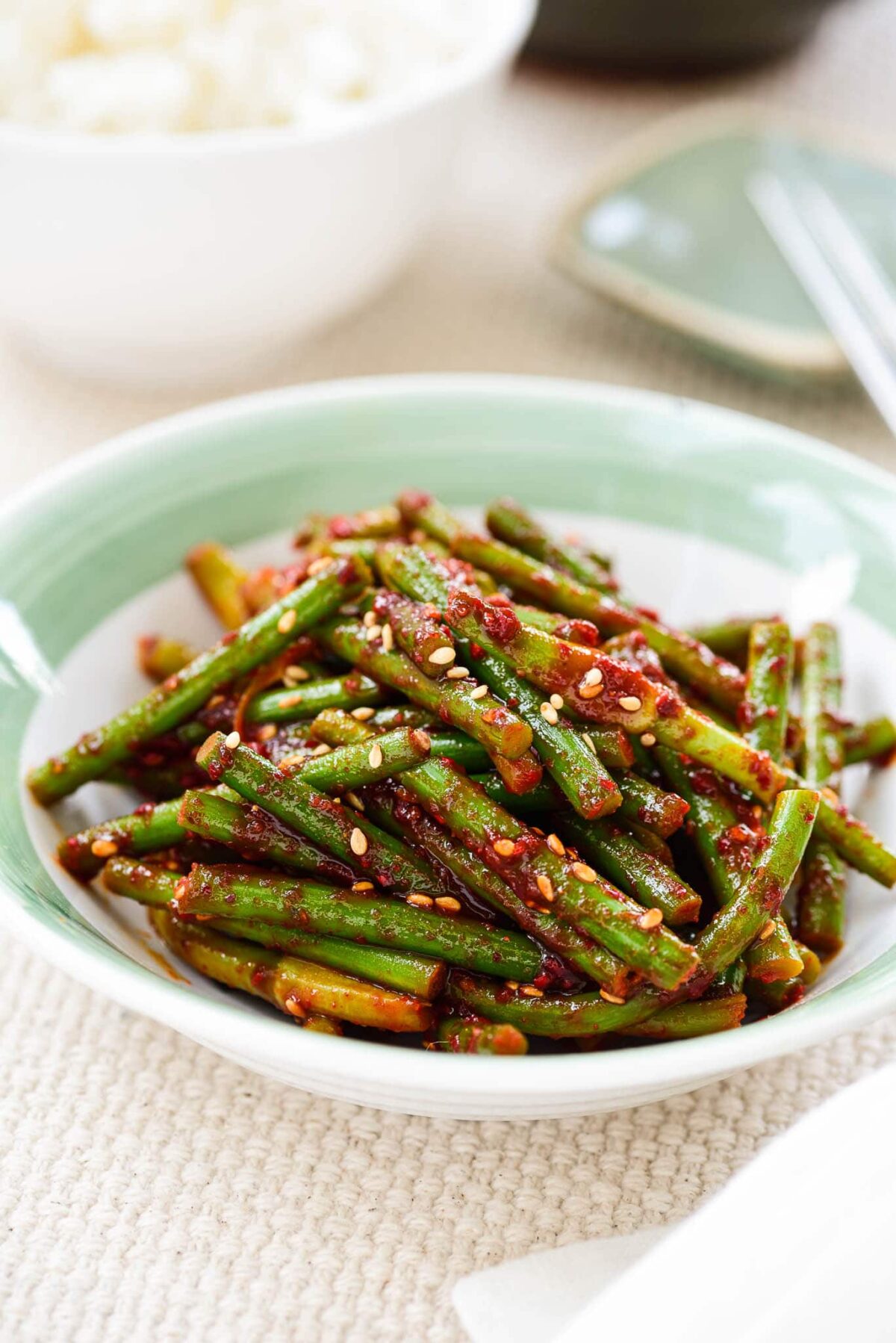

Have you tried cooking garlic scapes (maneuljjong, 마늘쫑) — those thin, green stalks with curly and stringy ends? They are in season in late spring to early summer. I previously posted a stir-fried garlic scape recipe (Maneuljjong Bokkeum, stir-fried garlic sprouts). This maneuljjong muchim (마늘쫑무침) recipe is another quick side dish you can make with garlic scapes that are sweet and tender right now.
What are garlic scapes?
Garlic scapes are the curly flowering shoots/stalks of hard-neck garlic plants. They are snipped off to allow the plant energy to focus on garlic bulbs. The scapes are milder than the garlic bulbs but still fairly garlicky. The spicy, garlicky flavor mellows when cooked. In terms of the texture, raw scapes are crunchy, similar to that of thin asparagus, although garlic scapes are generally tougher and more fibrous.
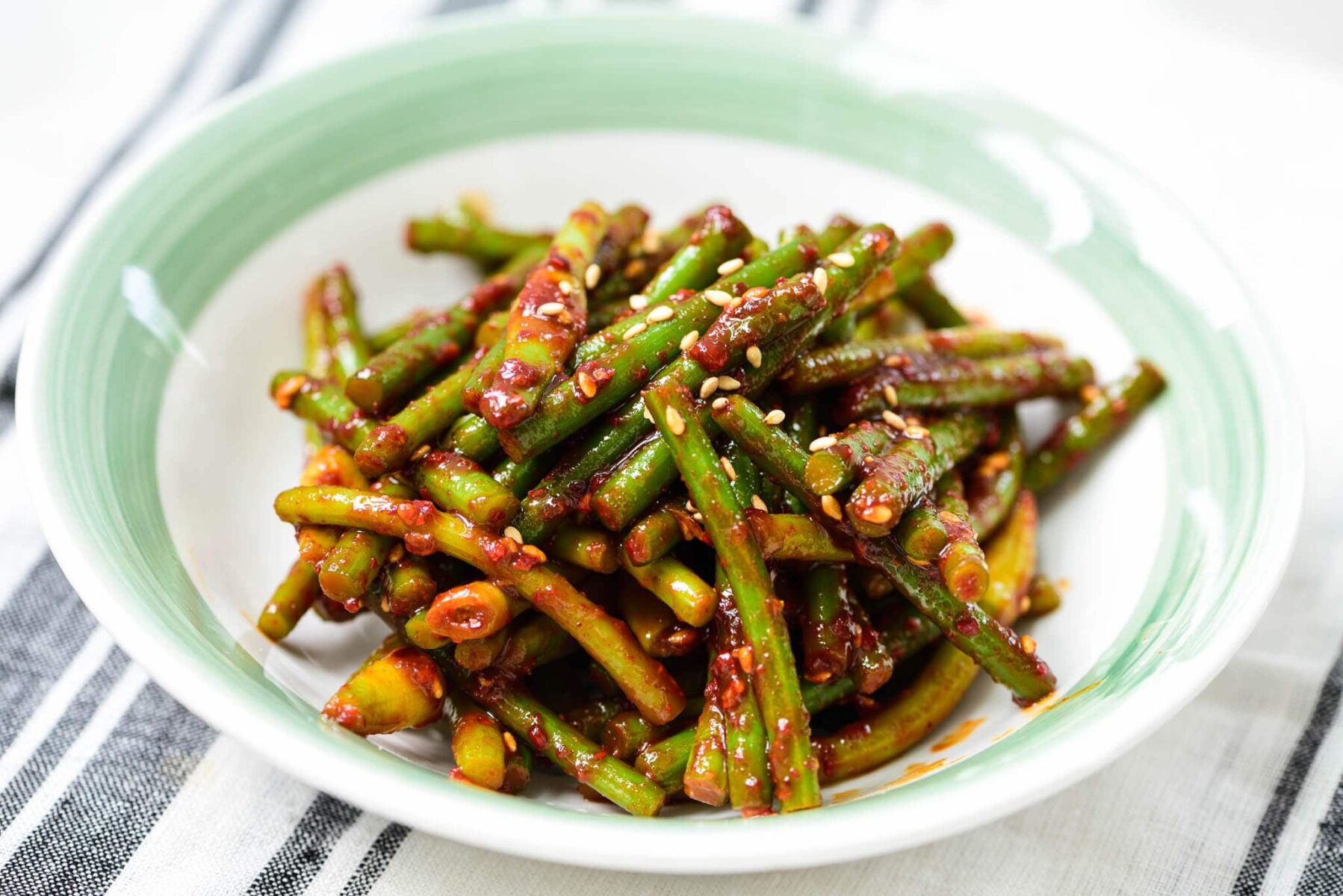

In Korea, garlic scapes are by no means an unusual ingredient. Koreans grow a lot of garlic, so garlic scapes are abundant in springtime and used as a vegetable for various dishes – stir-friedblanched and seasoned, or pickled.
I sometimes blend some scapes into a paste and add it to the grated potatoes to make potato pancakes or to the homemade noodle dough or dumpling dough. It adds a nice flavor and color to these dishes. They really are versatile!
So, grab some if you see at your local grocery store, Korean/Asian market, or farmers market. Look for thin ones with a nice green color. Scapes tend to be tenderer early in the season than the late season.
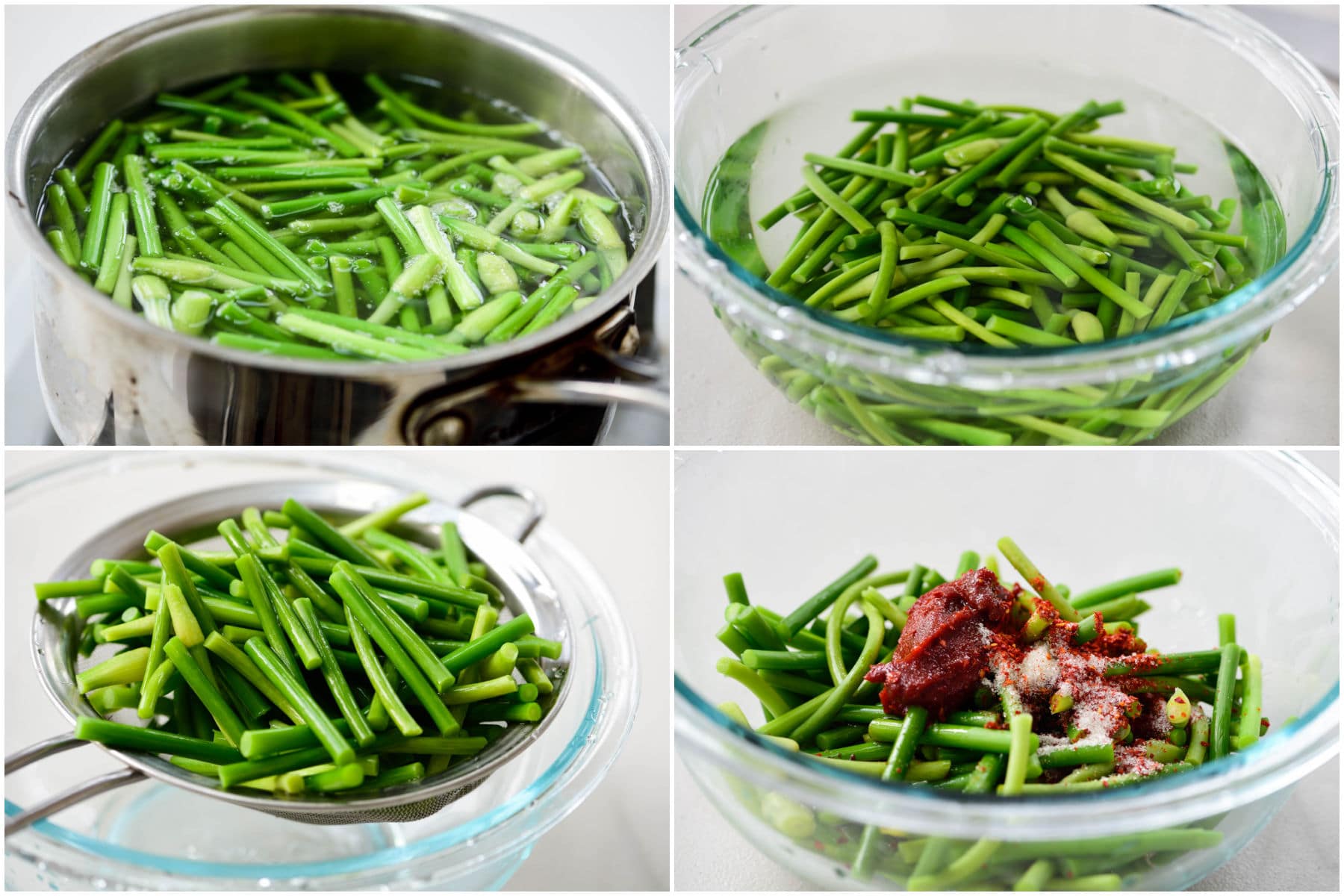

How to cook garlic scapes
For this recipe, blanch the scapes in boiling water. Blanching brings out mildly sweet garlic flavor and tenderizes the scapes. After rinsing them in cold water and draining, mix with a few basic seasoning ingredients. This flavorful vegetable doesn’t really need any other aromatic vegetables. So, no need for chopping or mincing garlic or ginger. Super easy!!
Also, garlic scapes can be eaten raw. You can skip the blanching process if the scapes are nicely tender and you don’t mind a little more pungency.
Gochujang is the main seasoning ingredient in this recipe, but gochugaru is a nice addition for that extra spicy kick some of us love. Feel free to adjust the amount of gochugaru to your taste. For sweetness, I used sugar in this recipe. If you have maesilcheong (Korean plum syrup), use a tablespoon or two. The fruity sweetness and acidity works well with the garlicky vegetable.
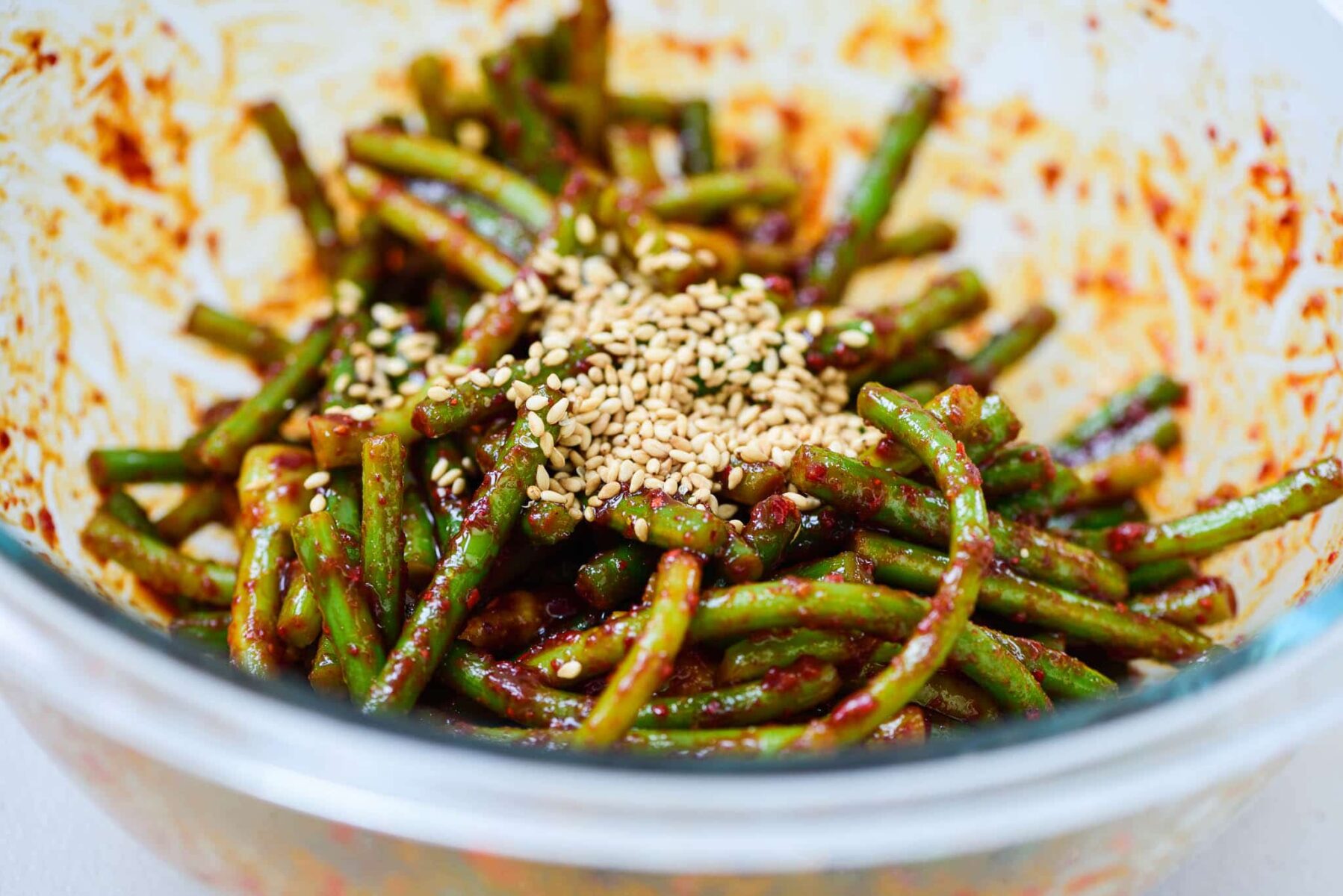

For more Korean cooking inspirations, follow along on YouTube, Pinterest, Twitter, Facebookand Instagram.
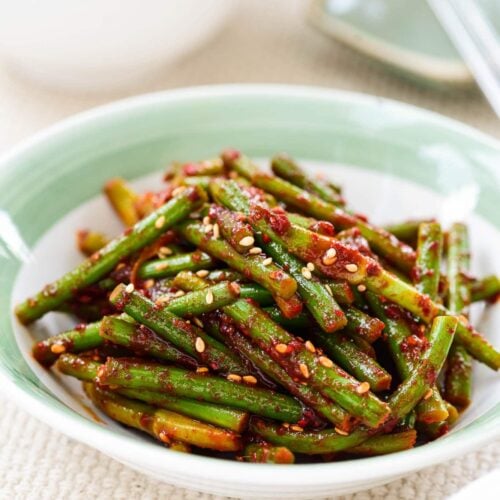

Notes
If you have maesilcheong (Korean plum syrup), it’s nice for this dish. Use about a tablespoon or to taste. The fruity sweetness and acidity works well with this garlicky vegetable.

